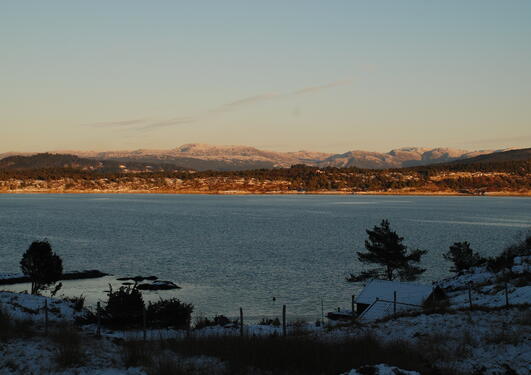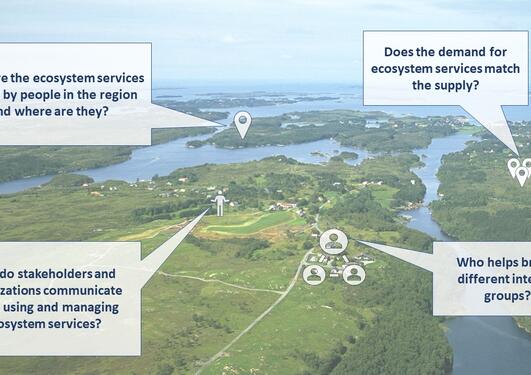How do afforestation and land abandonment impact multiple ecosystem services?
Agricultural activity in Norway has been decreasing since the 1950’s, leaving substantial areas of agricultural land abandoned. These lands are typically left to naturally regrow, or they are planted with Norwegian native tree species to mitigate atmospheric carbon. But how do these changes impact different ecosystem services? UNESCO Chair and CESAM affiliated researchers have investigated what happens to ecological processes and socio-cultural values when agricultural lands are abandoned or afforested, using the biggest municipality of Nordhordland UNESCO Biosphere Reserve (NBR) as their study site.
Main content
In this study, researchers investigated how changing and future land-use from afforestation and/or abandonment might affect both the biophysical supply of ecosystem services (ES) and the socio-cultural values for those ES associated with closed versus open vegetation. They used a multi-method approach to assess socio-cultural values and biophysical supply of ES in four different vegetation types:
- Open, semi-natural heathland - representing currently managed, open vegetation
- Natural mixed broadleaved forests dominated by birch, and coastal pine forests - both representing natural forests
- Planted spruce forests - representing afforestation
To assess the biophysical supply, the researchers used ecological field surveys to measure indicators for six different ES. The trade-off and synergies in the biophysical supply of these ES were then evaluated. Further, the sociocultural values of the selected ES were evaluated using data from a Public Participation Geographic Information Systems (PPGIS) survey, and the socio-demography behind the preference of different ES were also investigated. Finally, socio-cultural values for the chosen ES were compared to their biophysical supply in the different vegetation types.
In summary, the results showed that the biophysical supply of ES varied across vegetation types and synergies were as common as trade-offs. Socio-cultural values were high for most ES in open vegetation and natural forests and low for planted forests. Biophysical supply and socio-cultural values were well matched across the vegetation types for biodiversity and agricultural products, but strongly mismatched for climate regulation. Although trade-offs occur both within value- and between value domains, synergies are also common. Abandonment are shown to impact the biophysical supply and socio-cultural values of some ES, but this impact would be lower than that of afforestation.
The approach taken in this study can be used to manage trade-offs and enhance synergies between value domains for a holistic approach to landscape stewardship that supports both people and nature.
To learn more, read the full paper here in Land Use Policy, or contact corresponding author Jarrod Cusens.






